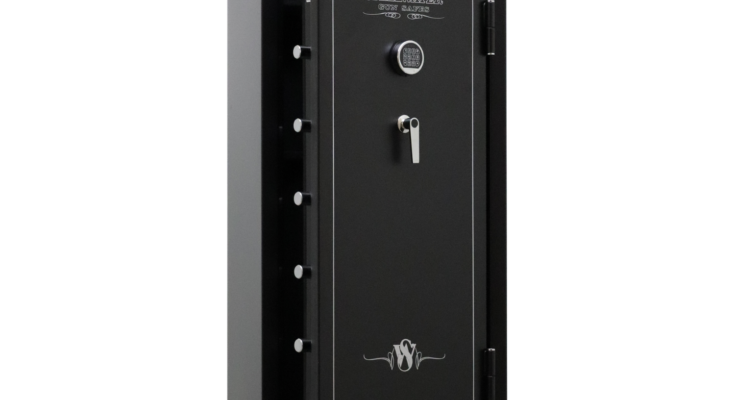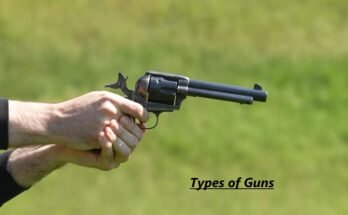Steelwater gun safes are known for their durability and advanced security features. Occasionally, users may encounter minor issues that can be resolved with simple troubleshooting steps. Common problems include keypad malfunctions, dead batteries, or issues with the locking mechanism. Regular maintenance and prompt attention to any anomalies can help ensure your gun safe remains secure and functional.
This guide will provide easy-to-follow troubleshooting tips to address these common issues, keeping your valuables protected and accessible. Whether you’re a first-time safe owner or an experienced user, understanding these basics can save you time and frustration.
Common Lock Issues
Steelwater gun safes are known for their durability and security. Yet, like any mechanical system, they can experience lock issues. Understanding common lock problems can help you troubleshoot effectively.
Electronic Lock Problems
Electronic locks can be convenient but sometimes fail. Here are some common issues and solutions:
- Dead Batteries: If the lock is unresponsive, check the batteries. Replace them with fresh ones.
- Keypad Malfunction: If buttons stick or don’t respond, clean the keypad. Use a soft, dry cloth.
- Error Codes: Refer to the manual for specific error codes. Follow the provided troubleshooting steps.
- Lockout Mode: Too many incorrect attempts can trigger lockout mode. Wait the required time, then try again.
Mechanical Lock Malfunctions
Mechanical locks are reliable but can still have issues. Here’s what to watch for:
- Stiff Dial: If the dial is hard to turn, lubricate it. Use a graphite-based lubricant.
- Incorrect Combination: Double-check the combination. Make sure you are entering it correctly.
- Lock Jamming: If the lock jams, it may need professional servicing. Contact a locksmith.
- Worn Components: Over time, parts can wear out. Inspect and replace worn parts as needed.
By addressing these common issues, you can keep your Steelwater gun safe functioning properly. Regular maintenance is key to avoiding lock problems.

Credit: www.reddit.com
Battery Replacement
Replacing the battery in your Steelwater Gun Safe is essential. A fresh battery ensures your safe operates smoothly and securely. Here’s a guide to help you with the process.
Choosing The Right Battery
It’s crucial to select the correct battery for your Steelwater Gun Safe. The recommended type is a 9-volt alkaline battery. Avoid using rechargeable batteries as they may not provide consistent power.
- Duracell 9-volt Alkaline Battery
- Energizer 9-volt Alkaline Battery
Step-by-step Replacement Guide
- Open the battery compartment. It’s usually on the inside of the safe door.
- Remove the old battery. Dispose of it properly.
- Insert the new 9-volt alkaline battery. Ensure the positive and negative terminals align correctly.
- Close the battery compartment securely. Check if the safe operates smoothly.
Remember, regular battery checks can prevent unexpected lockouts. Keep spare batteries handy to ensure your safe’s functionality.
Door Jamming Solutions
Steelwater gun safes are known for their durability and security. But sometimes, the door may jam. This can be frustrating. Here, we discuss how to solve door jamming issues.
Causes Of Door Jamming
Understanding the causes helps in finding the right solution. Common reasons include:
- Misaligned Door: The door may not be aligned properly.
- Debris in Lock Mechanism: Dirt can block the lock.
- Worn Out Hinges: Hinges may be old or rusty.
- Improper Bolt Work: The bolts may not slide smoothly.
Quick Fixes For Jamming
Try these quick fixes before calling a professional.
| Problem | Solution |
|---|---|
| Misaligned Door | Adjust the door alignment using a screwdriver. |
| Debris in Lock Mechanism | Clean the lock with a soft brush. |
| Worn Out Hinges | Lubricate the hinges with oil. |
| Improper Bolt Work | Lubricate the bolts for smooth movement. |
If the door still jams, try these steps:
- Check for Obstructions: Ensure nothing is blocking the door.
- Examine the Lock: Make sure the lock functions correctly.
- Inspect the Hinges: Look for rust or damage.
- Test the Bolts: Ensure bolts move freely.
Regular maintenance is key. Clean and lubricate the safe often. This prevents most jamming issues.

Credit: steelwatergunsafes.com
Hinge And Bolt Maintenance
Maintaining the hinges and bolts of your Steelwater Gun Safe is crucial. Proper care ensures the safe operates smoothly and securely. This guide provides essential tips for lubrication and tightening loose bolts.
Lubrication Tips
Keeping the hinges well-lubricated prevents wear and tear. Use high-quality lubricants designed for metal parts.
- Apply lubricant to the hinges every six months.
- Use a small brush to spread the lubricant evenly.
- Wipe off excess lubricant to avoid attracting dust.
- Inspect the hinges for any signs of rust or damage.
Proper lubrication ensures smooth door movement and extends the life of the hinges.
Tightening Loose Bolts
Loose bolts can compromise the security of your safe. Regularly check and tighten all bolts.
- Use a wrench to tighten loose bolts.
- Check the bolt tension every three months.
- Ensure bolts are snug, but do not over-tighten.
- Replace any bolts that are stripped or damaged.
Keeping bolts tight ensures your safe remains secure and functions properly.
| Maintenance Task | Frequency |
|---|---|
| Lubricate Hinges | Every 6 months |
| Check Bolt Tension | Every 3 months |
Regular maintenance of hinges and bolts is essential for your Steelwater Gun Safe. Follow these tips to ensure your safe remains in top condition.
Fire Protection Check
Ensuring your Steelwater gun safe offers optimal fire protection is crucial. Regular checks can help maintain safety. This section will guide you through important steps to keep your gun safe fire-resistant.
Inspecting Fire Seals
Inspect the fire seals around the door. These seals expand during a fire. They keep heat and smoke out. Look for cracks or gaps. Any damage can reduce protection.
Check these areas:
- Edges of the door
- Hinges and locking bolts
- Seal uniformity
Replace damaged seals immediately. Use seals recommended by Steelwater.
Enhancing Fire Resistance
Enhance your gun safe’s fire resistance with additional measures. Here are some tips:
- Place Safe Strategically: Position the safe away from flammable materials. Avoid placing it near windows.
- Use Fire-Resistant Barriers: Use fire-resistant barriers around your safe. This adds an extra layer of protection.
- Regular Maintenance: Keep the safe clean and dust-free. Ensure all parts function properly.
For added security, consider installing a fire alarm system. This can alert you quickly in case of fire.
| Task | Frequency |
|---|---|
| Inspect Fire Seals | Every 6 months |
| Check Fire-Resistant Barriers | Every year |
| Clean and Maintain Safe | Every 3 months |
By following these steps, you can ensure your Steelwater gun safe remains fire-resistant. Regular maintenance and strategic enhancements are key.
Moisture Control
Proper moisture control is crucial for maintaining your Steelwater Gun Safe. Excess moisture can lead to rust and damage your firearms. This section will cover two essential methods: using dehumidifiers and preventing rust.
Using Dehumidifiers
Dehumidifiers are essential tools for controlling moisture inside your gun safe. Here are some options:
- Electric Dehumidifiers: These plug into a power source and continuously remove moisture.
- Desiccant Packs: These absorb moisture and can be recharged by drying them out.
Place the dehumidifier at the bottom of the safe. This helps it absorb moisture efficiently. Check and maintain your dehumidifier regularly.
Preventing Rust
Rust can damage your firearms and other valuables. Follow these steps to prevent rust:
- Regular Cleaning: Clean your firearms and safe interior regularly.
- Use Gun Oil: Apply a thin layer of gun oil to your firearms.
- Humidity Control: Keep the humidity level below 50%.
Consider using a humidity gauge to monitor levels. Keep your safe in a cool, dry place. Avoid placing it in damp areas like basements.
Resetting Safe Codes
Resetting the code on your Steelwater Gun Safe ensures your firearms and valuables stay secure. Whether you need a factory reset or want to set new codes, follow these simple steps.
Factory Reset Instructions
Sometimes, you may need to reset your safe to its factory settings. This action will erase all user codes and revert to the default code.
Follow these steps to perform a factory reset:
- Open the safe using the current code.
- Locate the reset button inside the door.
- Press and hold the reset button until you hear a beep.
- Enter the factory default code: 1-2-3-4-5-6.
- Press the # button to confirm.
Your safe is now reset to factory settings.
Setting New Codes
After a factory reset, it’s crucial to set a new, secure code. Follow these steps:
- Open the safe using the default code 1-2-3-4-5-6.
- Locate the code change button inside the door.
- Press and hold the button until you hear a beep.
- Enter your new code (4-8 digits).
- Press the # button to confirm.
Test the new code several times to ensure it works.
Keep your new code safe and share it only with trusted individuals.
Customer Support
Steelwater Gun Safe offers excellent customer support for any issues you may have. Knowing when to contact support and what information to provide can help resolve issues quickly.
When To Contact Support
Contact support if your gun safe won’t open with the correct code. Get in touch if the safe’s locking mechanism is stuck or malfunctioning. Reach out if you experience battery-related issues or electronic failures. Seek support if you need help with lost keys or combination resets. Contact them for any warranty claims or parts replacement.
Information To Provide
When contacting customer support, have the following details ready:
- Model Number: This is usually found on the safe’s body or manual.
- Purchase Date: Provide the date you bought the safe.
- Problem Description: Describe the issue you are facing in detail.
- Troubleshooting Steps Taken: Inform them of any steps you have already tried.
- Contact Information: Include your name, phone number, and email address.
Providing this information helps customer support assist you better and faster.
Frequently Asked Questions
Why Is My Gun Safe Not Opening?
Your gun safe might not open due to dead batteries, incorrect code, or a jammed lock. Replace batteries and double-check your code.
Why Is My Keypad Not Working On My Safe?
Your keypad might not work due to dead batteries, loose connections, or a malfunctioning keypad. Replace batteries first.
Can You Reset Code On Gun Safe?
Yes, you can reset the code on a gun safe. Refer to the manufacturer’s instructions for specific steps.
Why Wont My Safe Code Work?
Your safe code may not work due to incorrect input, dead batteries, or a malfunctioning keypad. Double-check the code and replace batteries.
Conclusion
Troubleshooting your Steelwater gun safe can be straightforward with the right guidance. Regular maintenance ensures optimal performance. Follow these tips to keep your valuables secure. Always consult the manual for specific issues. A well-maintained safe provides peace of mind and longevity.
Keep your Steelwater safe in top condition for years to come.
Related Post:



